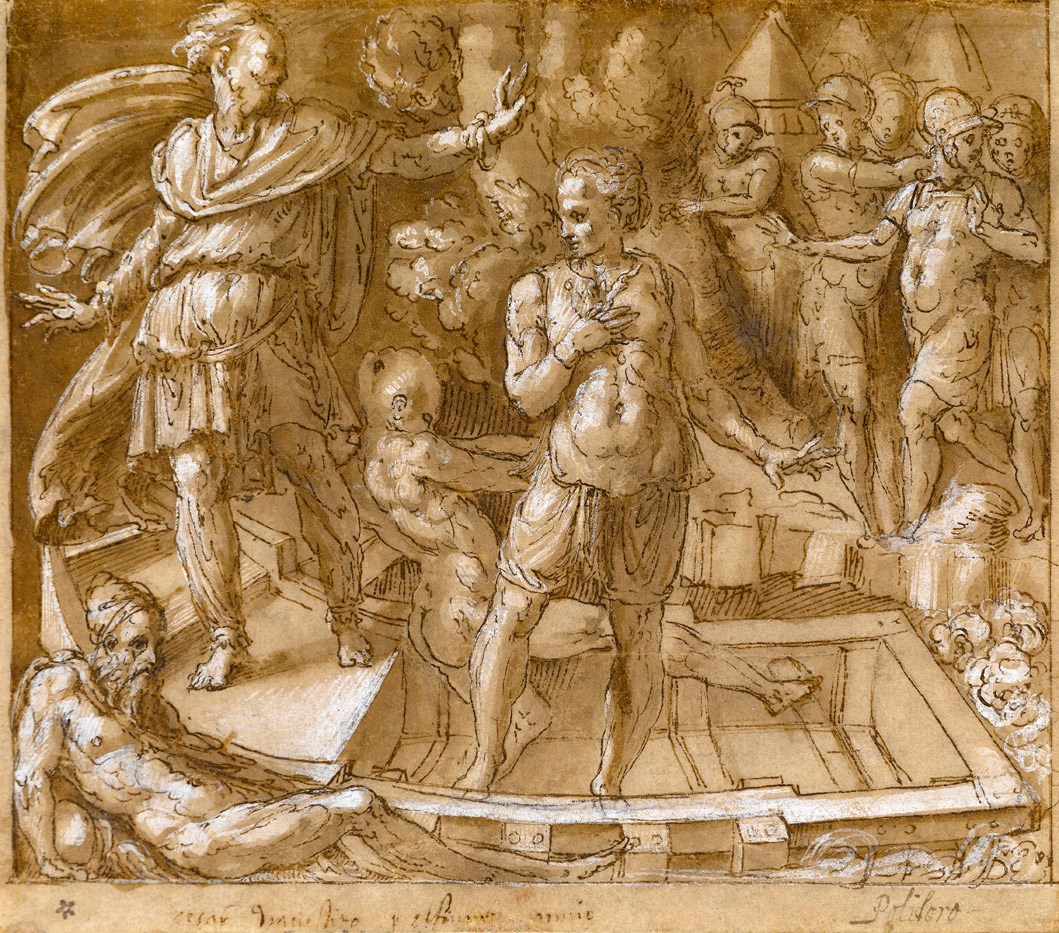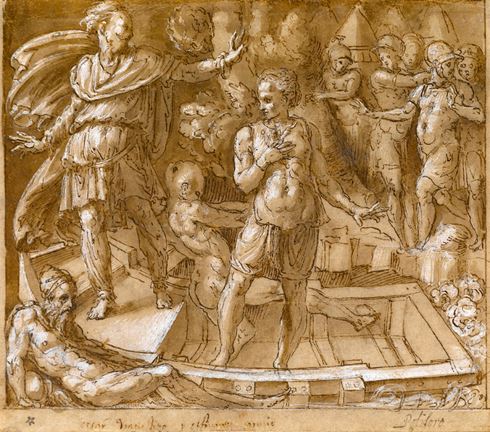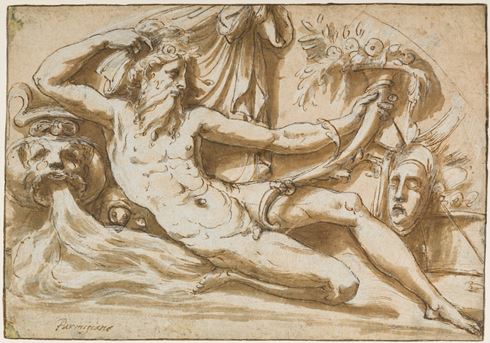
Piero Buonacorsi, PERINO DEL VAGA
Florence 1501 - Rome 1547
Biography
Perino del Vaga’s career can be divided into three main periods, each lasting about nine or ten years: his training and early independent career in Rome until the sack of the city in 1527, followed by a period spent in Genoa at the court of Andrea Doria between 1528 and 1537, and a final stay in Rome - working mainly for Pope Paul III - from around 1538 until his death in 1547. He began his career as an assistant to Raphael on the decoration of the Vatican logge in 1518, and with Giovanni da Udine he decorated the Sala dei Pontefici in the Vatican in 1521. In 1522 he was working in Florence, but had returned to Rome by 1524, when he worked on the fresco decoration of the Cappella Pucci in the church of the Trinità dei Monti, as well as a cycle of frescoes for the Palazzo Baldassini and paintings for San Marcello al Corso and Santa Maria sopra Minerva.
Following the Sack of Rome in 1527 Perino settled in Genoa, where he was employed by Prince Andrea Doria on the extensive decoration of the Palazzo Doria on the outskirts of the city - a project which occupied the artist for several years - and also received several commissions for religious and secular paintings. Although Perino stayed less than ten years in Genoa, his influence on the local school of painters was significant. He is also documented in Pisa in 1534, working in the Duomo. Perino returned in the late 1530’s to Rome, where he gained the patronage of the Farnese Pope Paul III. Perino worked extensively on the decoration of the various rooms of the Castel Sant’Angelo and the Sala Regia of the Vatican.
Characterized by considerable inventiveness, range and skill, Perino del Vaga’s drawings mark him as one of the most gifted draughtsmen of the 16th century in Italy. Giorgio Vasari rated him very highly (‘the best and most finished draughtsman that there was among all who were drawing in Rome’), and noted that he drew constantly. His drawings range from sheets of rapid sketches to elaborate and highly finished figure and composition studies. The majority of Perino’s surviving drawings are studies in pen and ink; a medium the artist seems to have preferred by virtue of its fluidity and expressiveness. His drawings often serve as the only record of large-scale damaged or destroyed commissions, and relatively few examples can be related to surviving works. Vasari notes that ‘Perino left many designs at his death, some by his hand and some by others…All these designs, with other things, were sold by his heirs; and in our book are many drawings done by him with the pen, which are very beautiful.’ Many of Perino’s drawings were sold by his daughter after his death to the art dealer Jacopo Strada in 1556. These included copies after other artists and, according to another contemporary writer, drawings of an ‘endless number of funerary reliefs, statues, and grotesques copied from classical works.’



